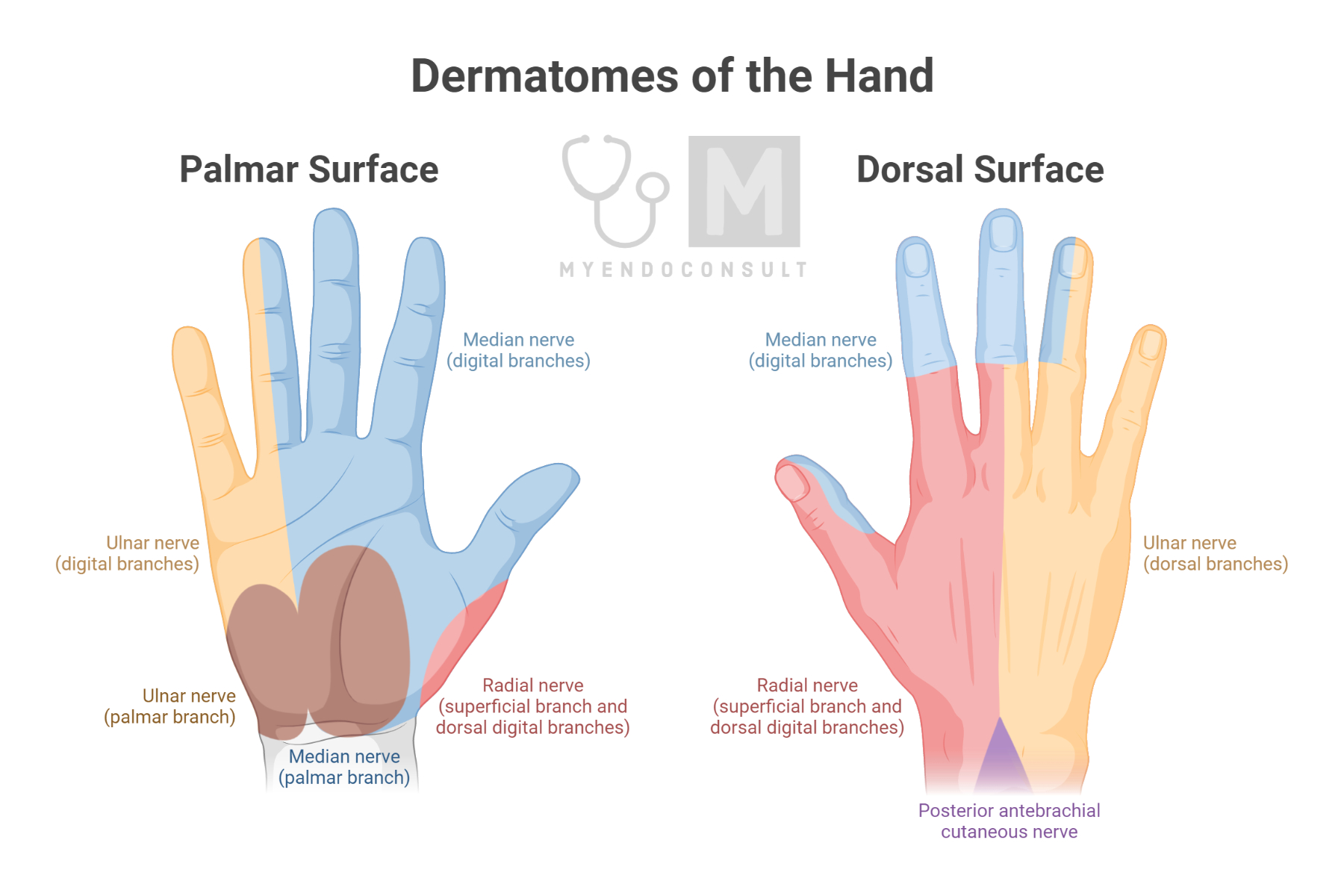Dermatomes are specific areas of the skin that receive sensory innervation from a single spinal nerve. Each spinal nerve emerges from the spinal cord and branches to different parts of the body, providing sensation and motor control. On the hand, dermatomes are particularly important for sensory perception, fine motor skills, and coordination.
Innervation of the hand dermatomes
Hand dermatomes receive innervation primarily from cervical spinal nerves C5 to T1. The brachial plexus, a complex network of nerves formed by the ventral rami of the C5 to T1 spinal nerves, gives rise to several nerves that supply the hand, including the median, ulnar, and radial nerves. Each of these nerves carries sensory information from specific regions of the hand to the spinal cord, thus defining the dermatomes.

Major Nerves that supply the dermatomes of the hand
Median nerve
The median nerve, formed by the lateral and medial cords of the brachial plexus, is responsible for sensation in the palmar aspect of the hand, particularly the thumb, index finger, middle finger, and half of the ring finger. It also innervates the tips of these fingers on the dorsal side. The median nerve dermatome is roughly represented by the spinal nerves C6, C7, and C8.
Ulnar nerve
The ulnar nerve arises from the medial cord of the brachial plexus and provides sensory innervation to the remaining part of the hand. Covers the little finger, half of the ring finger, and the adjacent area of the palm on the palmar side. On the dorsal side, the ulnar nerve innervates the little finger, half of the ring finger, and the associated part of the hand. The spinal nerves C8 and T1 primarily represent the ulnar nerve dermatome.
Radial nerve
The radial nerve, which originates from the posterior cord of the brachial plexus, is primarily responsible for sensation on the dorsal aspect of the hand. Innervates the area between the thumb and index finger and the lateral part of the hand near the wrist. While the primary role of the hand is motor function, its sensory innervation can be linked to the spinal nerves C6 and C7.
It is important to note that dermatomes can exhibit some variability between individuals, and there might be overlapped areas of sensory innervation due to the distribution of nerve fibers. Understanding the dermatomes of the hand is crucial for diagnosing and treating nerve injuries, assessing sensory deficits, and performing regional anesthesia in surgical procedures.
Kindly Let Us Know If This Was helpful? Thank You!


